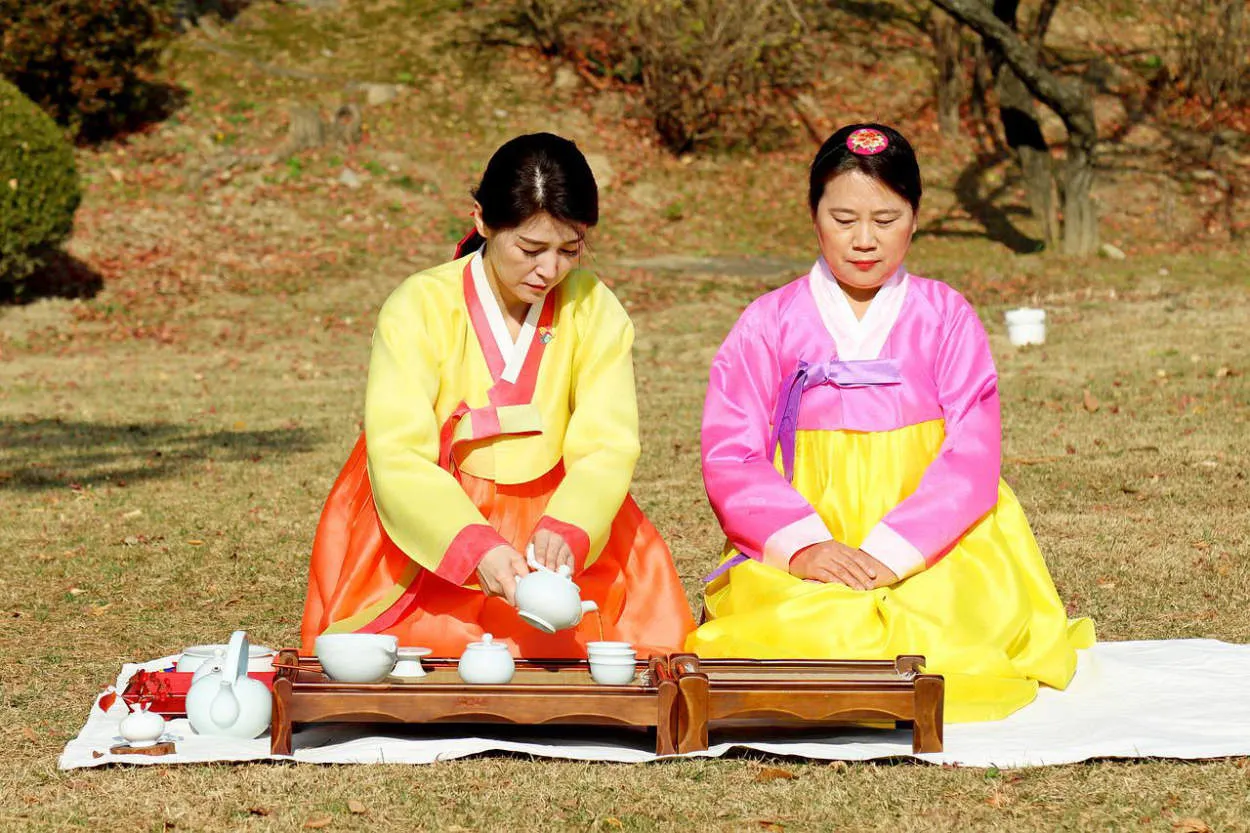Immerse yourself in the tranquil world of Korean tea culture as we explore the art of savoring serenity in a cup. From the traditional tea ceremonies to the diverse range of flavors and health benefits, discover the rich heritage and mindfulness practices that make Korean tea a beloved beverage among tea enthusiasts worldwide.
The Art of Traditional Tea Preparation
In the fascinating realm of Korean tea culture, one can experience the serene beauty found in every cup. Korean tea preparation is an exquisite art form that combines ancient traditions with a deep appreciation for nature’s offerings.
Central to this unique practice is the meticulous preparation process, involving various tools and techniques. Traditional Korean tea ceremonies emphasize harmony, respect, and the pursuit of inner peace.
At the heart of Korean tea culture is the concept of “dado,” which means “the way of tea.” It embodies the spirit of mindfulness, grounding individuals in the present moment and fostering a sense of tranquility. Whether it’s the elegant tea set or the meticulously selected tea leaves, every aspect of the tea preparation process receives meticulous attention.
The serene experience begins by selecting the appropriate tea leaves and meticulously measuring the right amount to achieve the perfect flavor. The water used is crucial, as it affects the tea’s taste and aroma. Once the water reaches the ideal temperature, it is carefully poured over the tea leaves, allowing them to release their essence gradually.
Korean tea culture encourages individuals to approach tea as more than a simple beverage. It is a form of meditation, offering a brief respite from the fast-paced world outside. The act of sipping tea is a sensory journey, allowing one to appreciate the flavors, the aroma, and the texture.
Furthermore, Korean tea culture embraces the value of community. Tea ceremonies often serve as occasions for bonding and connection, where participants can engage in meaningful conversations while enjoying the calming effects of tea.
Through the art of traditional tea preparation, Korean tea culture offers individuals a moment of serenity, a chance to pause and find solace amidst the chaos of daily life. It invites us to witness the beauty of nature in a delicate cup, and reminds us to embrace the present in every sip.
Popular Types of Korean Tea
In Korean culture, tea holds a special place as a beloved beverage and a way to relax and connect with others. Here are some popular types of Korean tea that are cherished for their unique flavors and health benefits.
1. Green Tea (Nokcha)
Green tea, or nokcha, is the most well-known and widely consumed type of Korean tea. It is made from leaves that are steamed and dried, preserving their vibrant green color and fresh taste. Green tea is known for its high antioxidant content and various health benefits.
2. Barley Tea (Boricha)
Barley tea, or boricha, is a caffeine-free infusion made from roasted barley grains. It has a rich, nutty flavor and is often served cold during the summer months. Barley tea is loved for its soothing effects and is believed to aid digestion and promote relaxation.
3. Citron Tea (Yuja-cha)
Citron tea, or yuja-cha, is a sweet and tangy tea made from the fruit of the yuzu citrus tree. It is often enjoyed during the winter to boost the immune system and combat cold symptoms. Citron tea can be served hot or cold and is a popular remedy for relieving coughs and sore throats.
4. Ginseng Tea (Insam-cha)
Ginseng tea, or insam-cha, is an herbal tea made from the roots of the ginseng plant. It has a slightly bitter and earthy taste, and is known for its energizing and medicinal properties. Ginseng tea is believed to enhance mental clarity, boost the immune system, and improve overall vitality.
5. Jujube Tea (Daechu-cha)
Jujube tea, or daechu-cha, is a sweet and warming tea made from dried jujube fruits. It has a caramel-like flavor and is often enjoyed during the autumn and winter seasons. Jujube tea is cherished for its calming effects, digestive benefits, and ability to improve sleep quality.
These are just a few examples of the diverse range of Korean teas that are deeply rooted in tradition and cultural significance. Each tea offers a unique taste and potential health benefits, making Korean tea culture a fascinating and soothing experience.
Teahouses and the Korean Tea Ceremony
In the rich tapestry of Korean tea culture, teahouses and the traditional Korean tea ceremony hold a prominent place. Teahouses are not just places to enjoy a cup of tea; they are sanctuaries of serenity where one can escape the hustle and bustle of daily life.
The Korean tea ceremony, known as darye, is an integral part of Korean tea culture. Rooted in the principles of harmony, respect, purity, and tranquility, the ceremony is a delicate art form that promotes mindfulness and gratitude.
Teahouses in Korea are often beautifully designed with traditional architecture and serene surroundings. They provide the perfect ambiance for experiencing the Korean tea ceremony and immersing oneself in the tranquility it offers.
During the tea ceremony, every detail matters. The preparation of tea is done with utmost care and precision. From the selection of tea leaves to the boiling of water and the serving of tea, each step is meant to enhance the overall meditative experience.
Teahouses offer a variety of teas, each with its unique flavors and health benefits. From green tea to herbal infusions, there is something for every tea enthusiast. The knowledgeable teahouse staff can guide visitors in choosing the perfect tea based on their preferences.
Visiting a teahouse in Korea provides not only an opportunity to sip on delicious teas but also to delve into the rich cultural heritage and spiritual aspects of Korean tea culture. It is a chance to slow down, find inner peace, and connect with oneself and others.
Conclusion
The Korean tea culture is a deeply-rooted tradition that offers more than just a beverage. It embodies serenity, mindfulness, and a connection with nature. Whether it’s enjoying a cup of green tea, herbal tea, or even the popular matcha latte, Koreans embrace the art of tea-drinking as a way to find calmness and inner peace in their daily lives.




